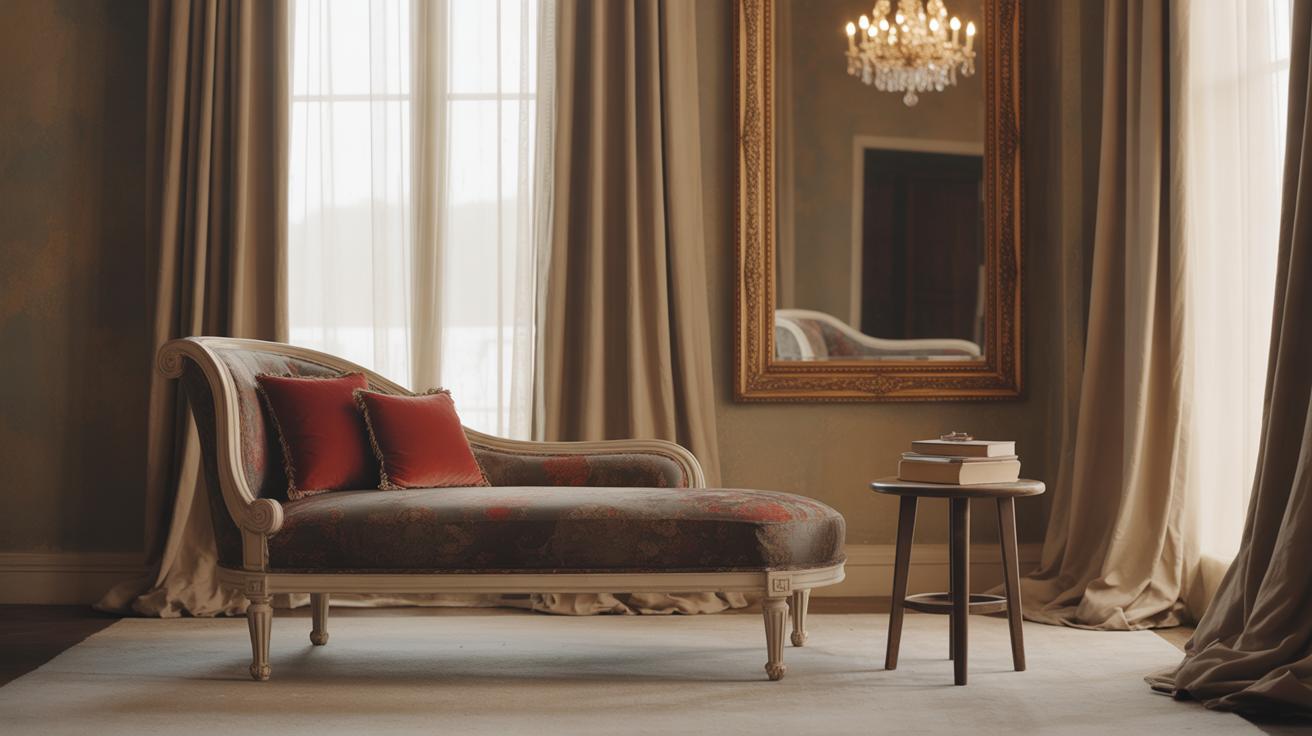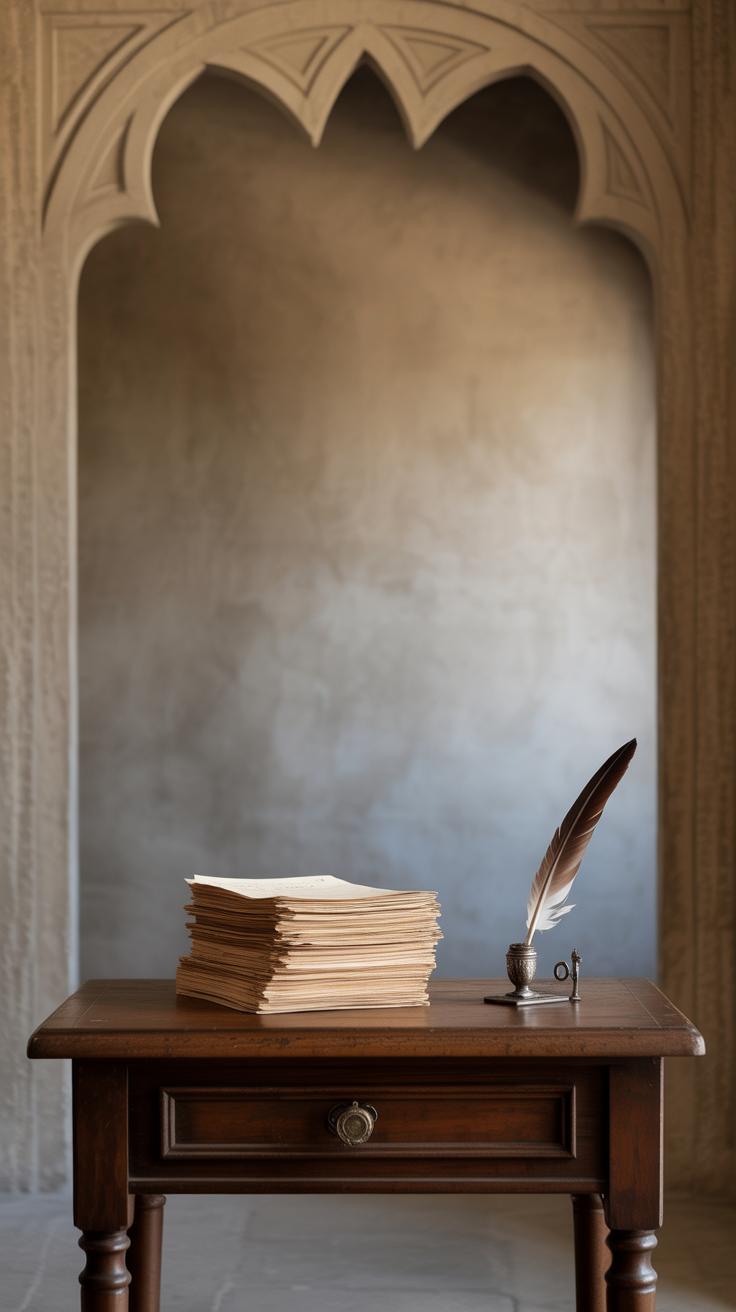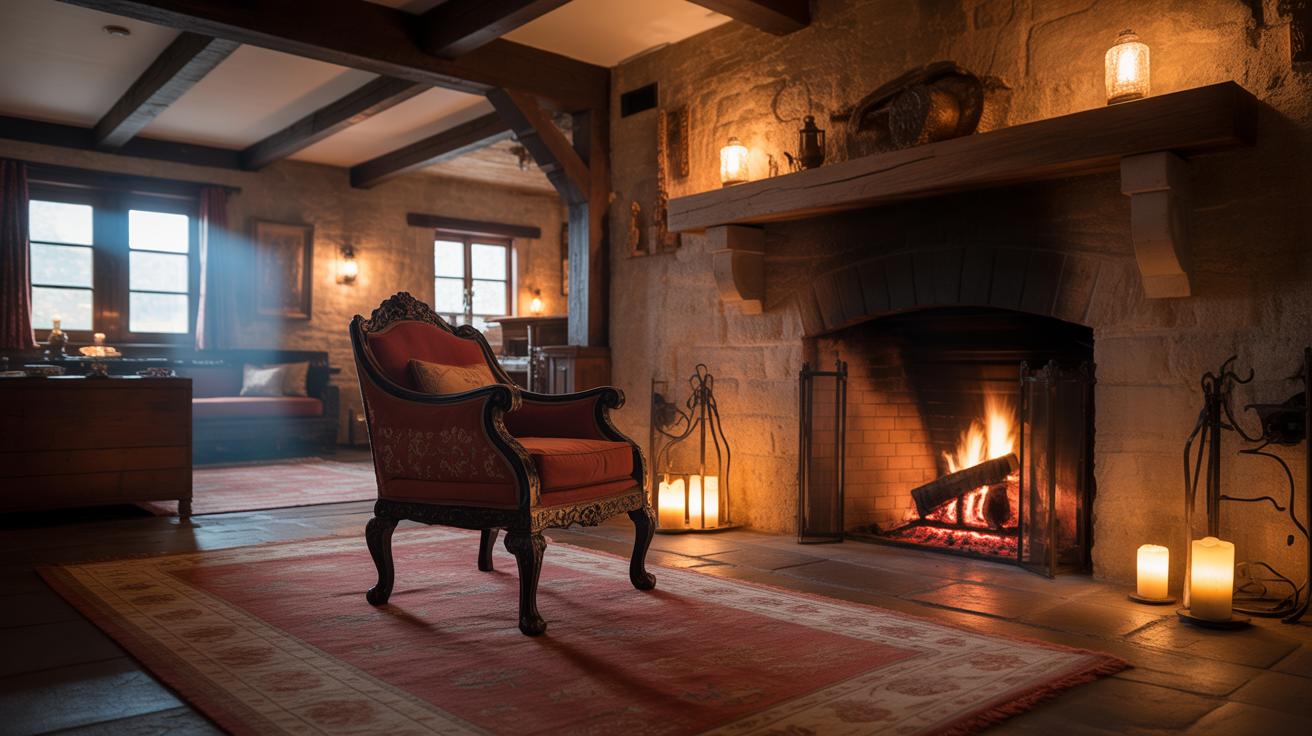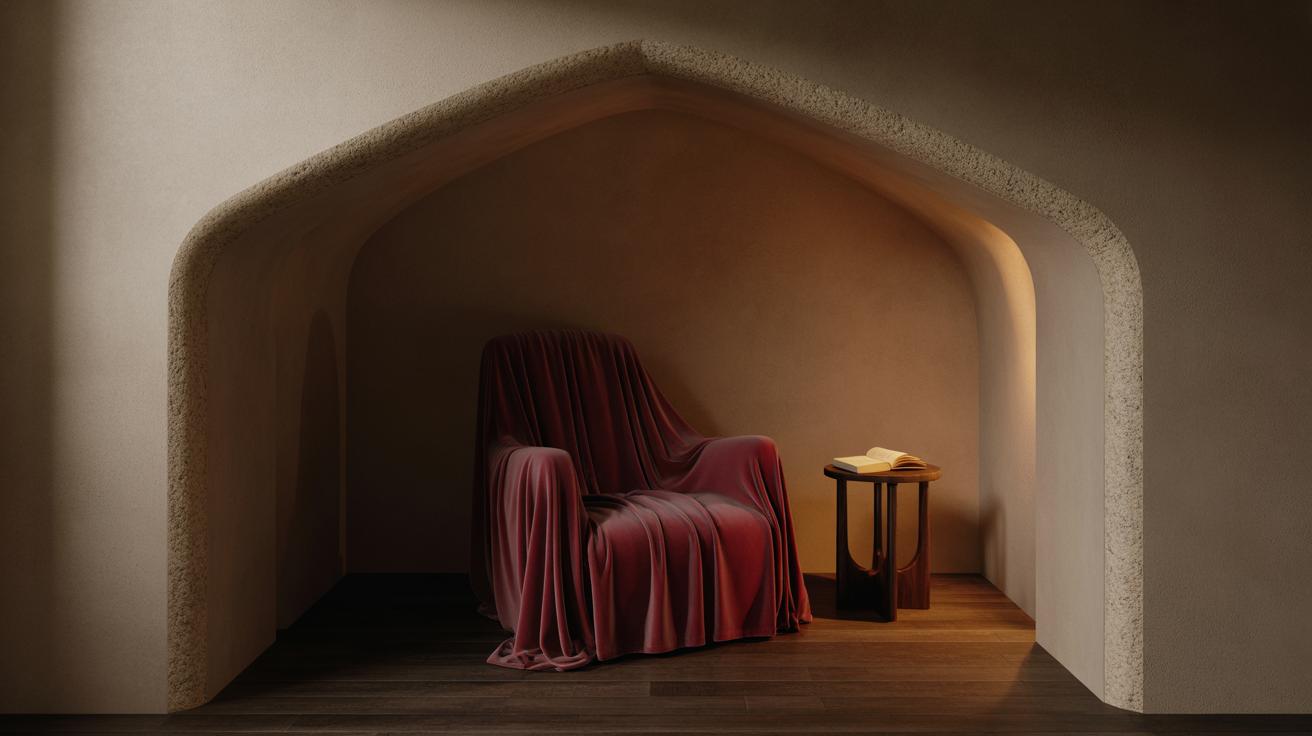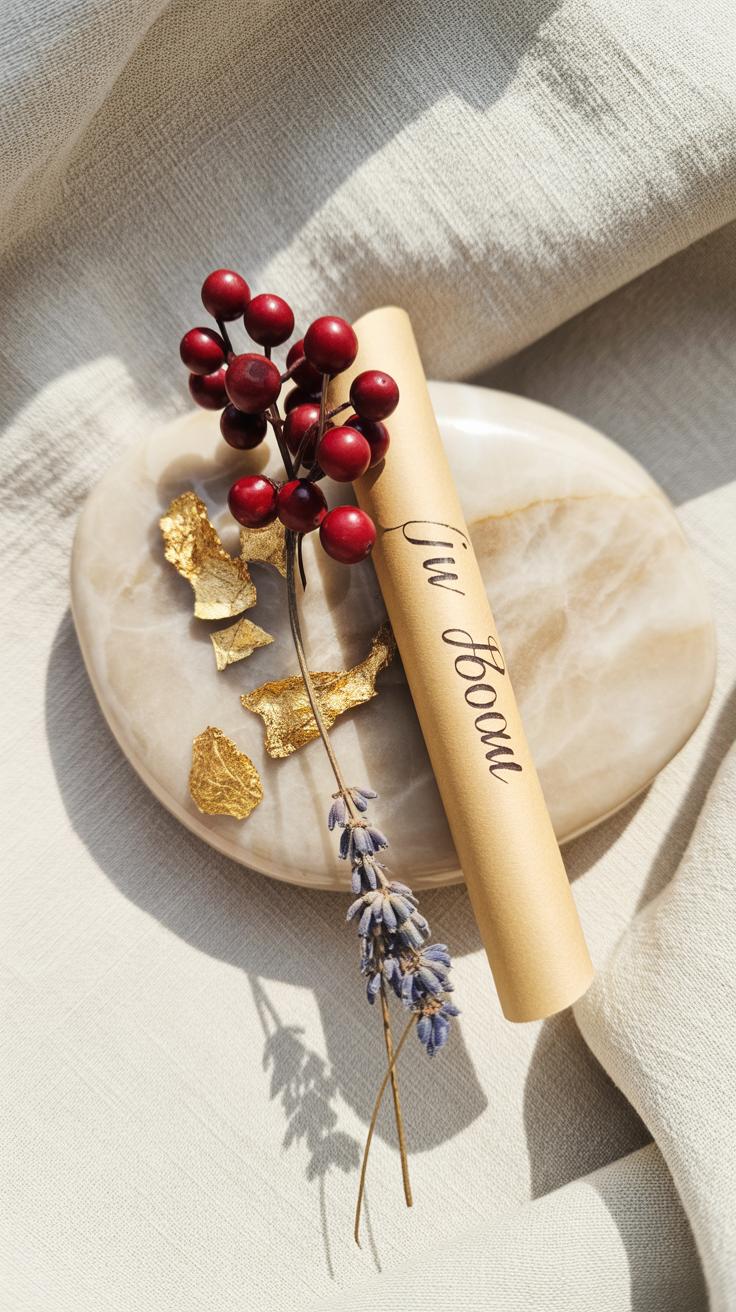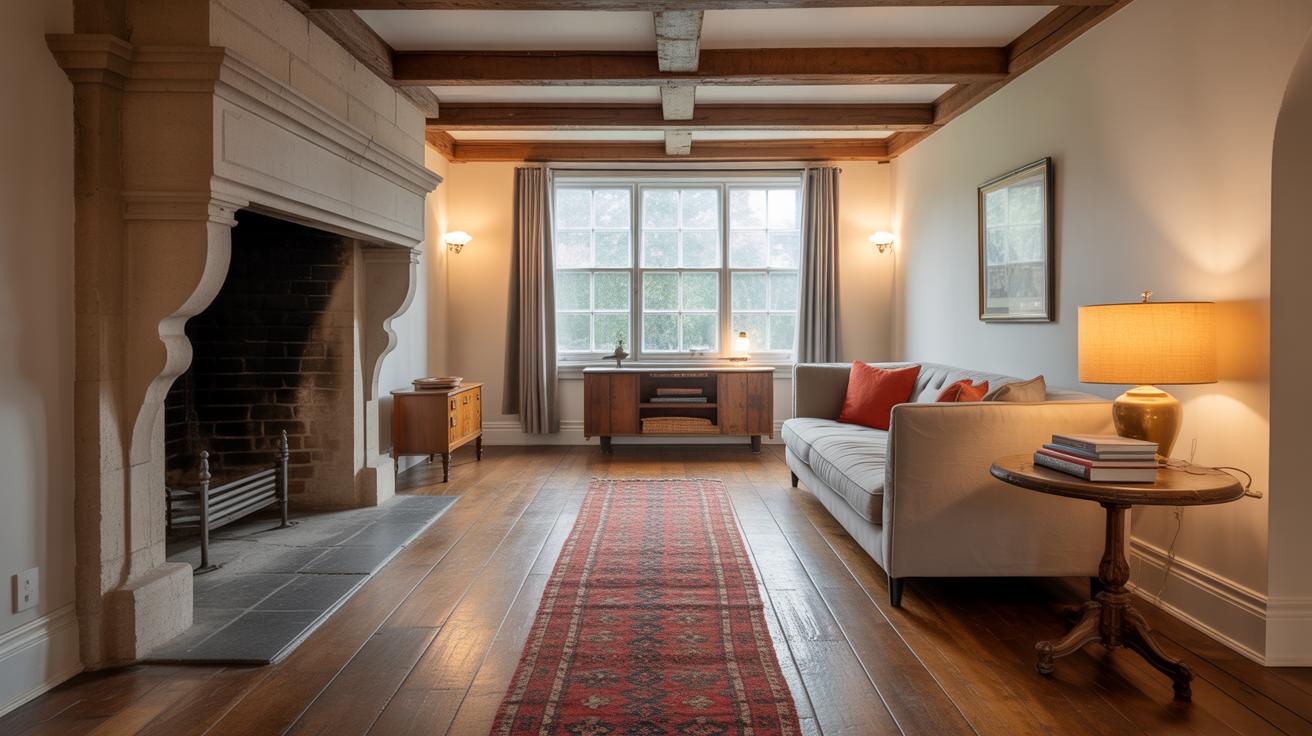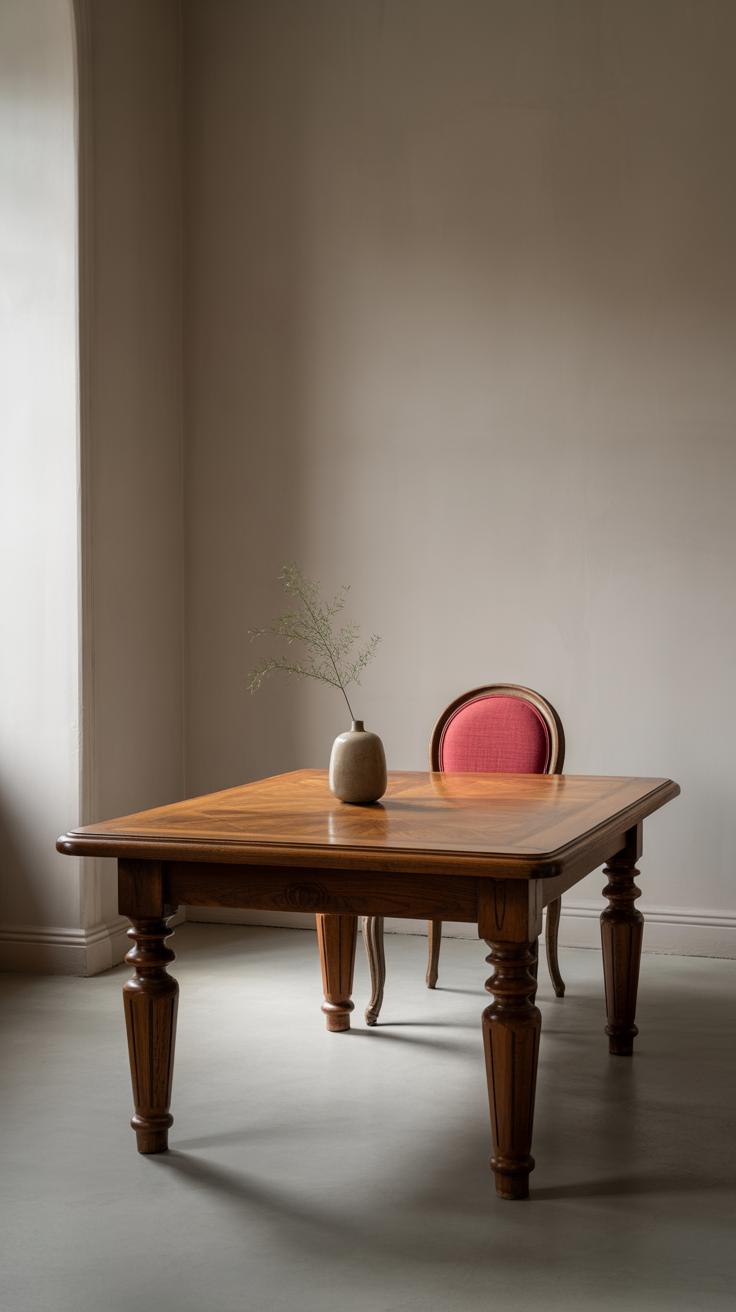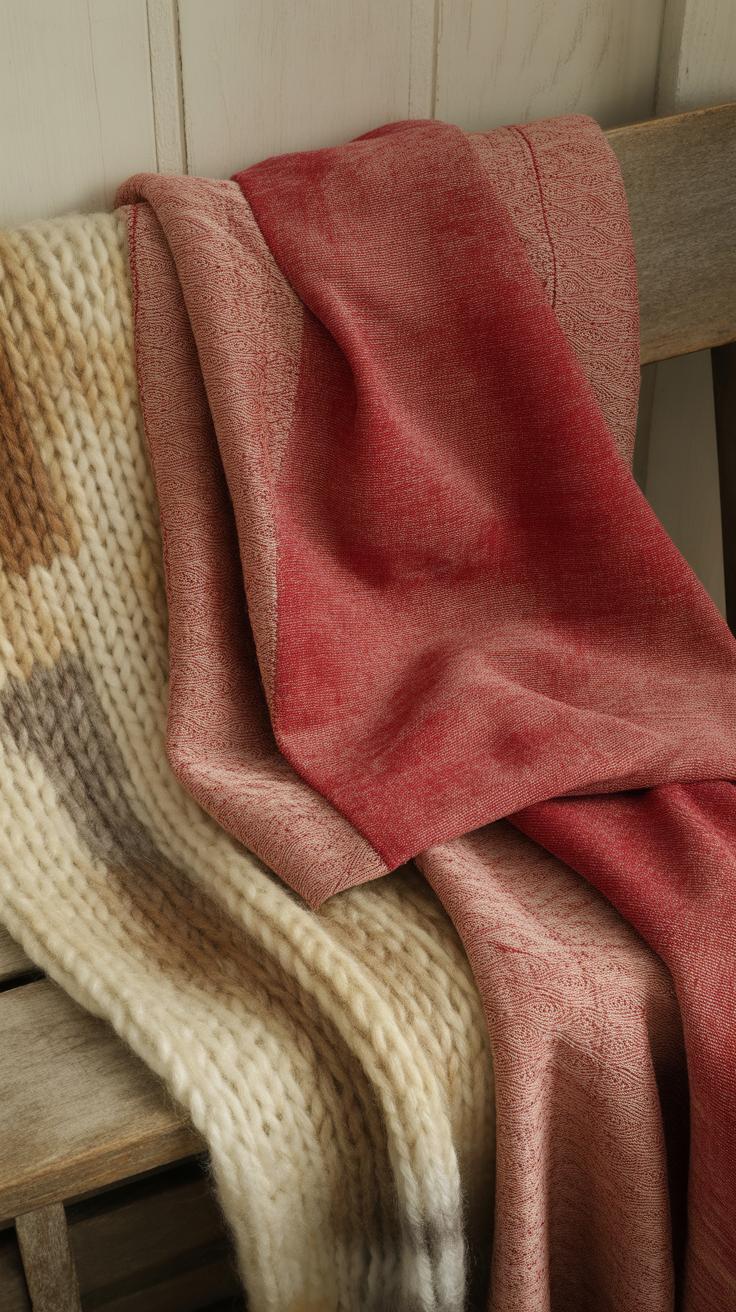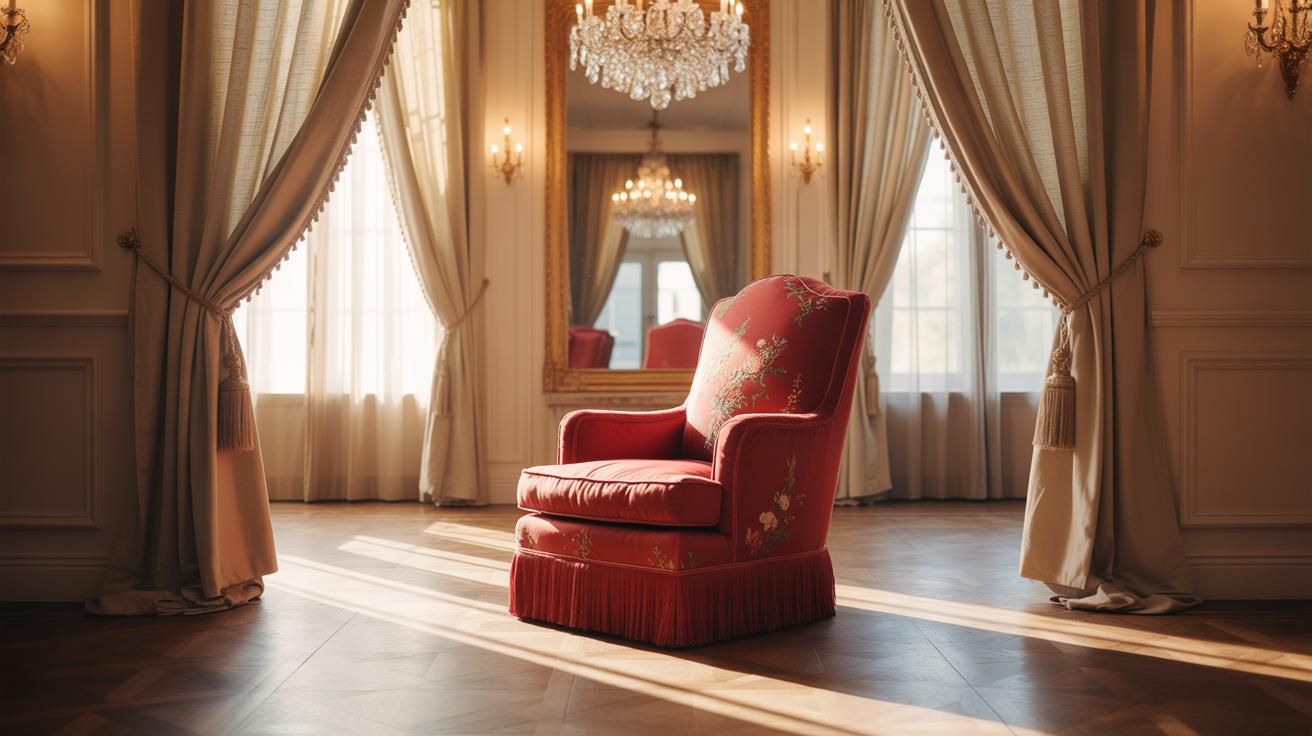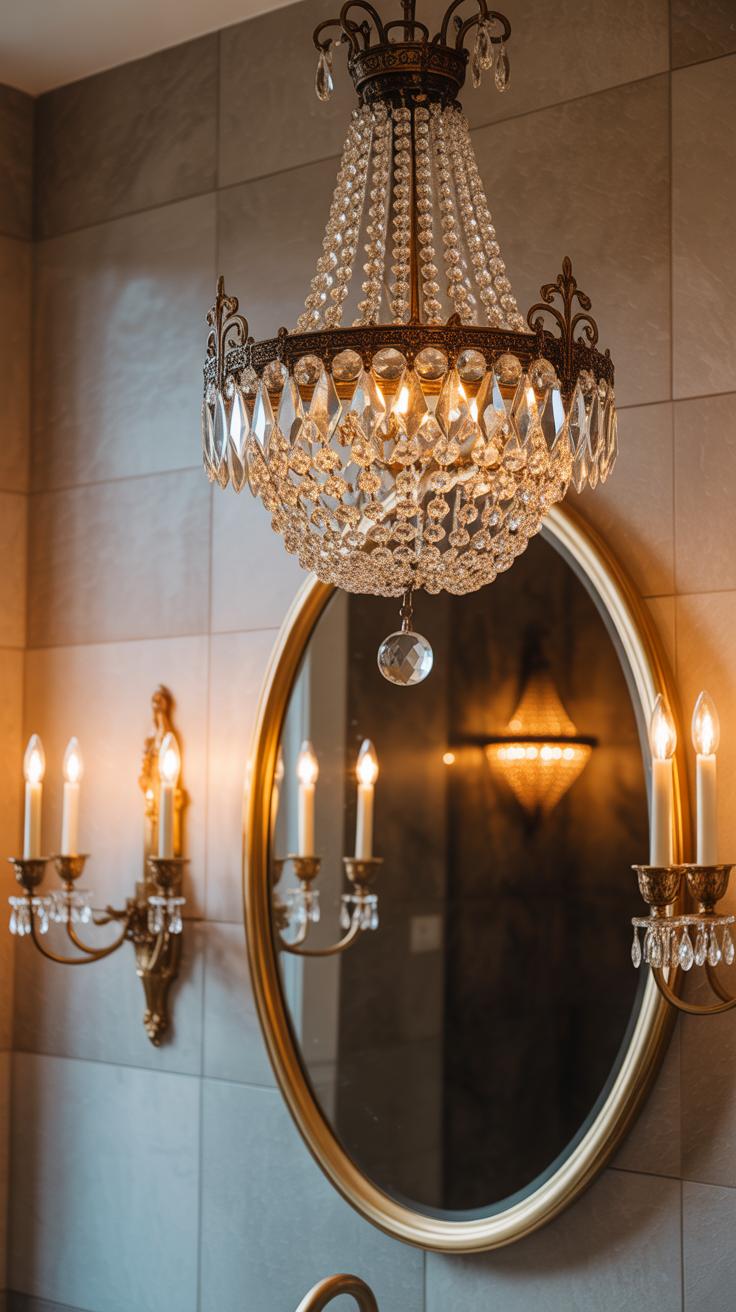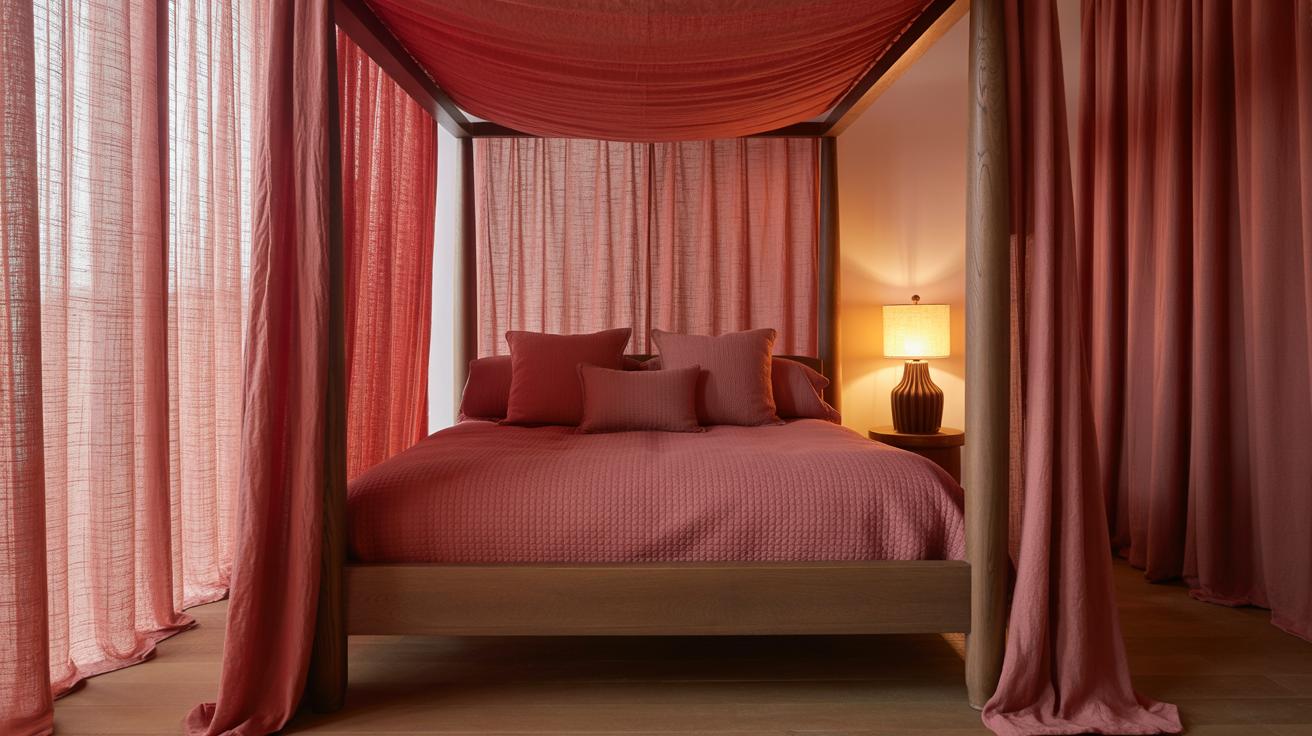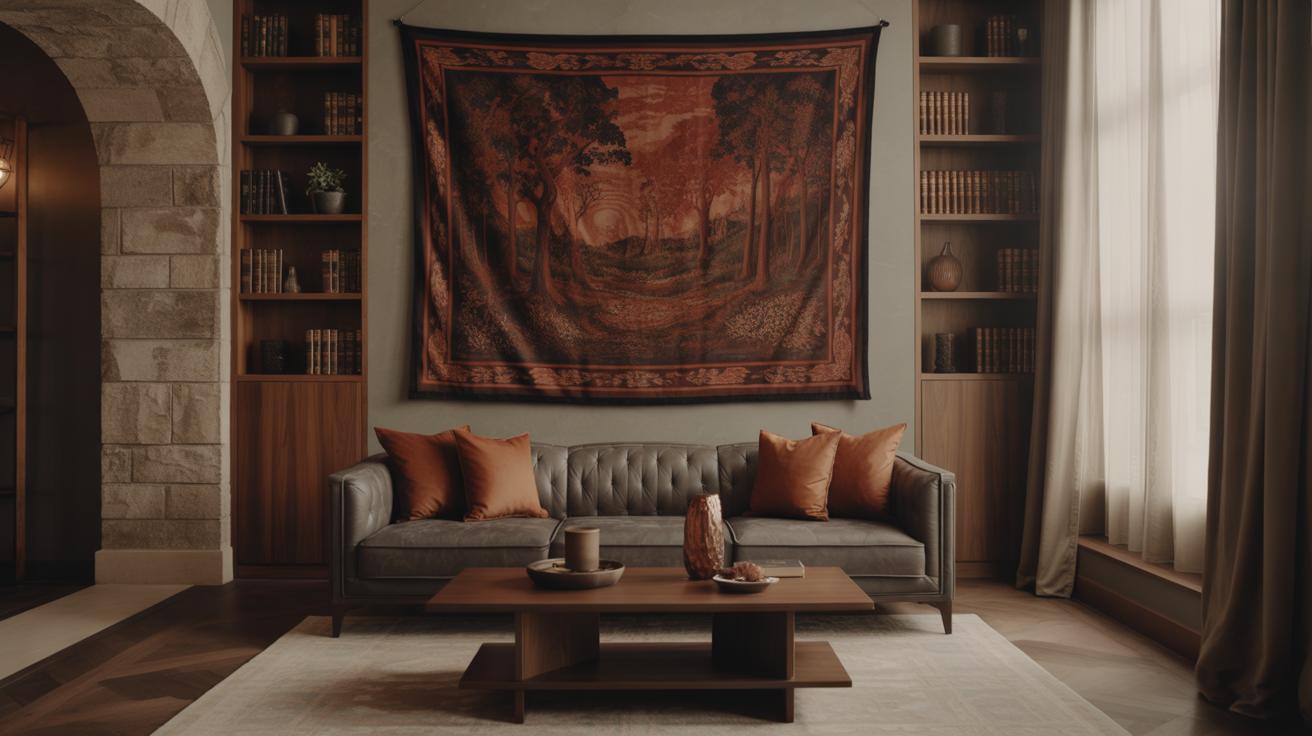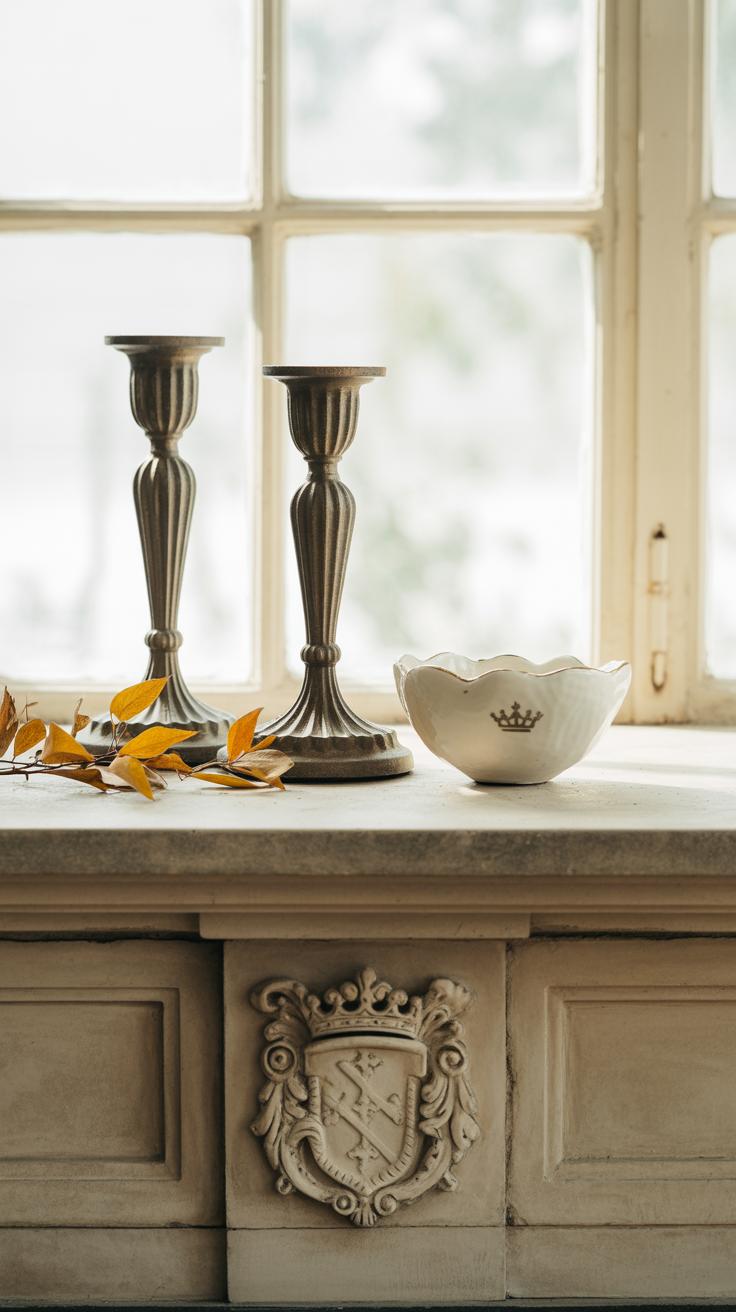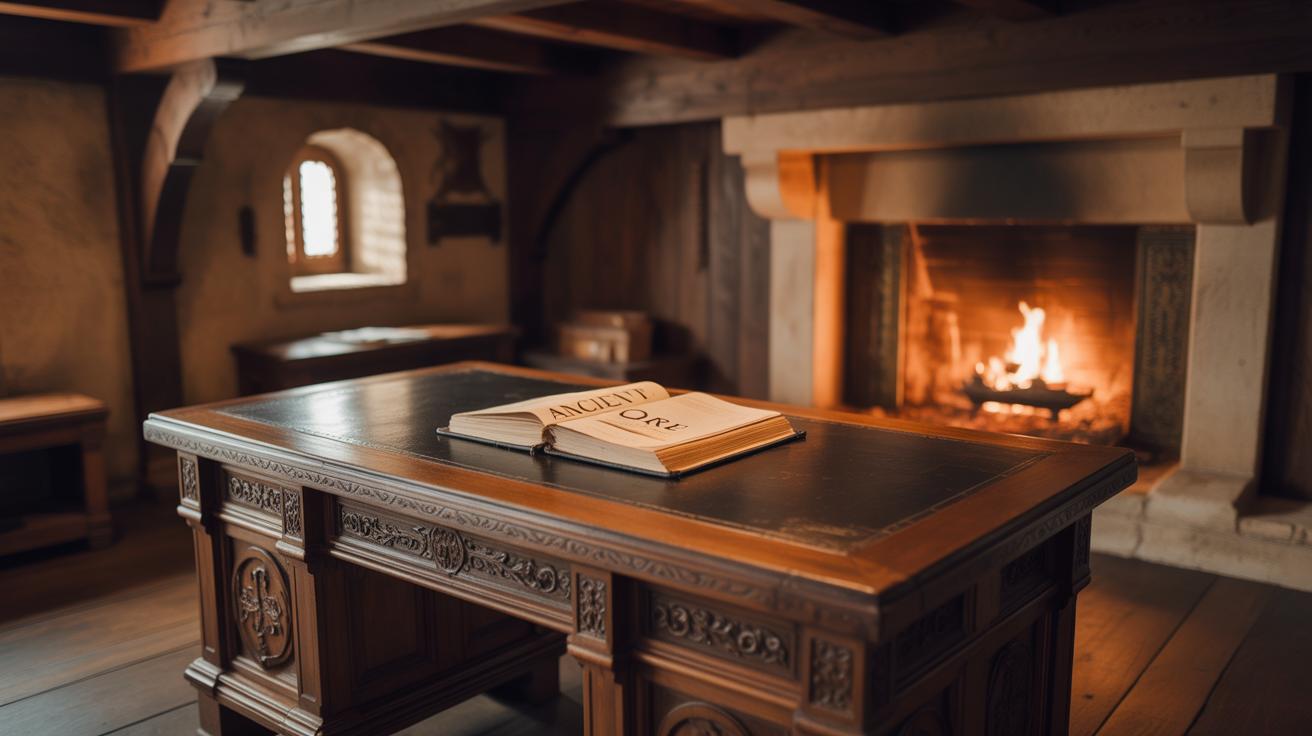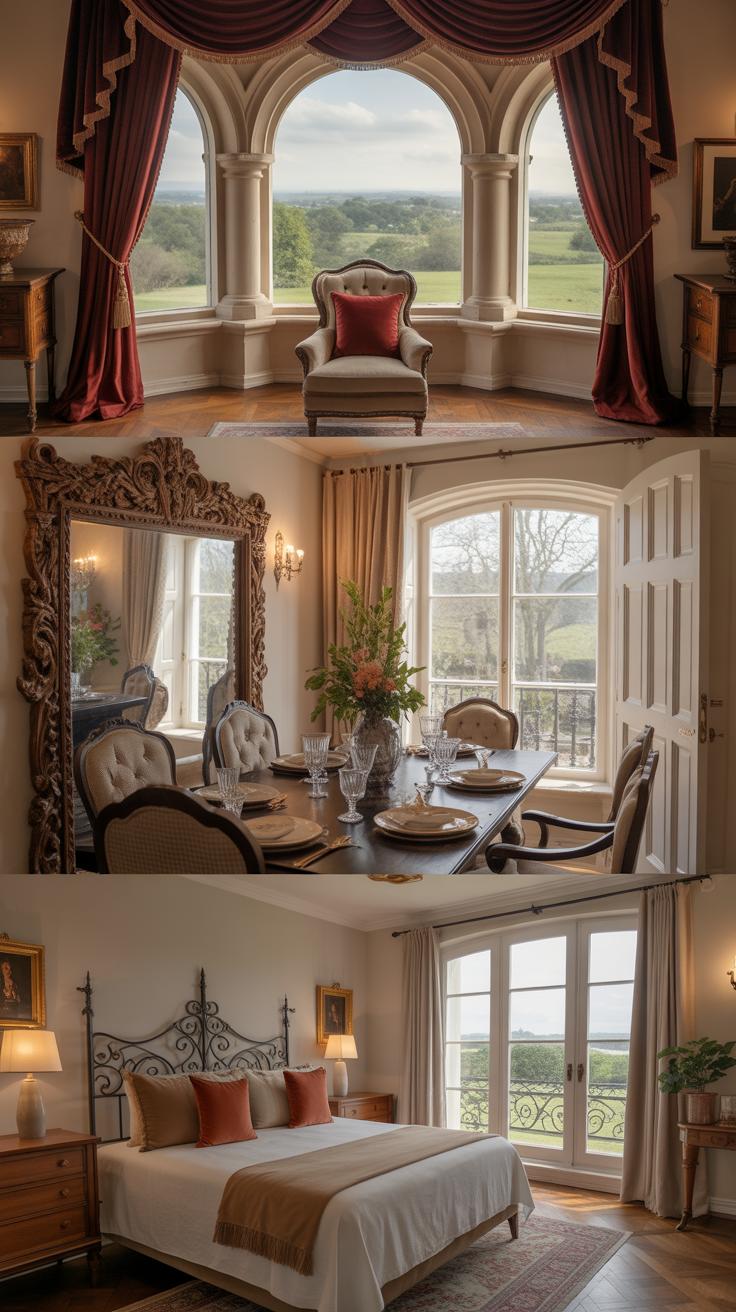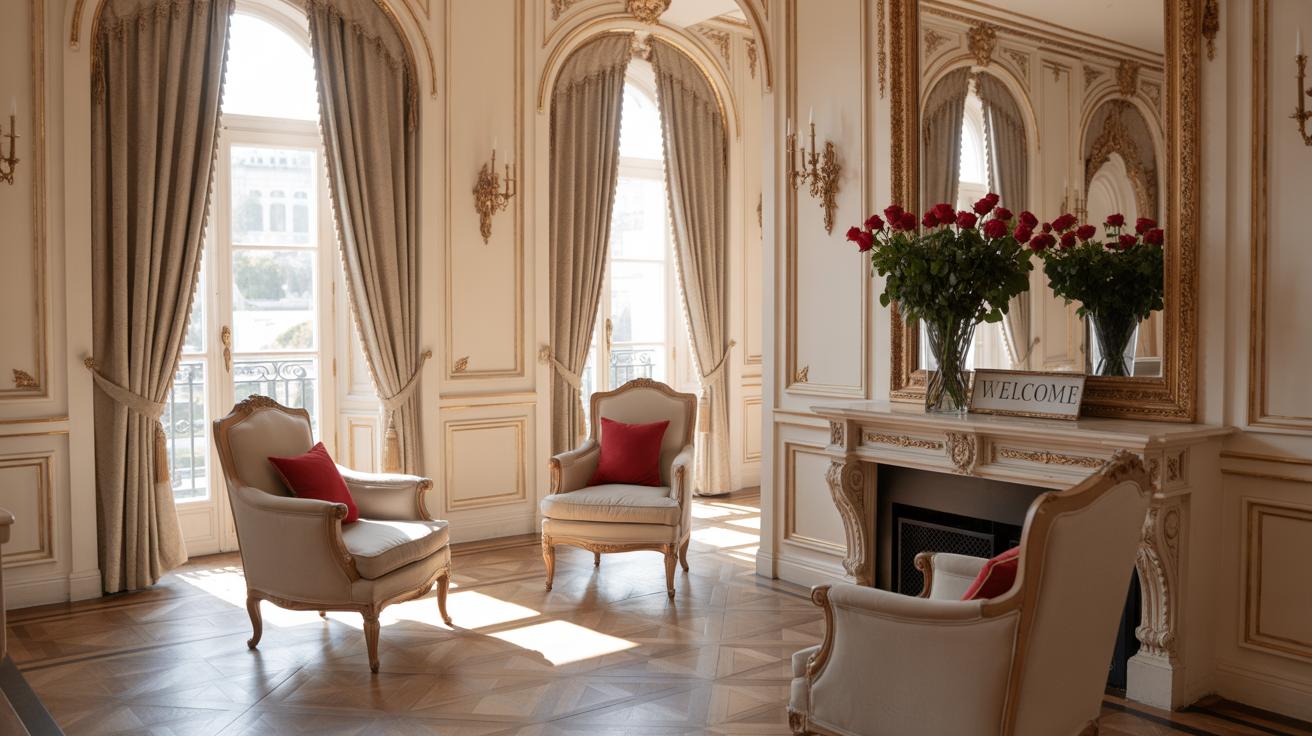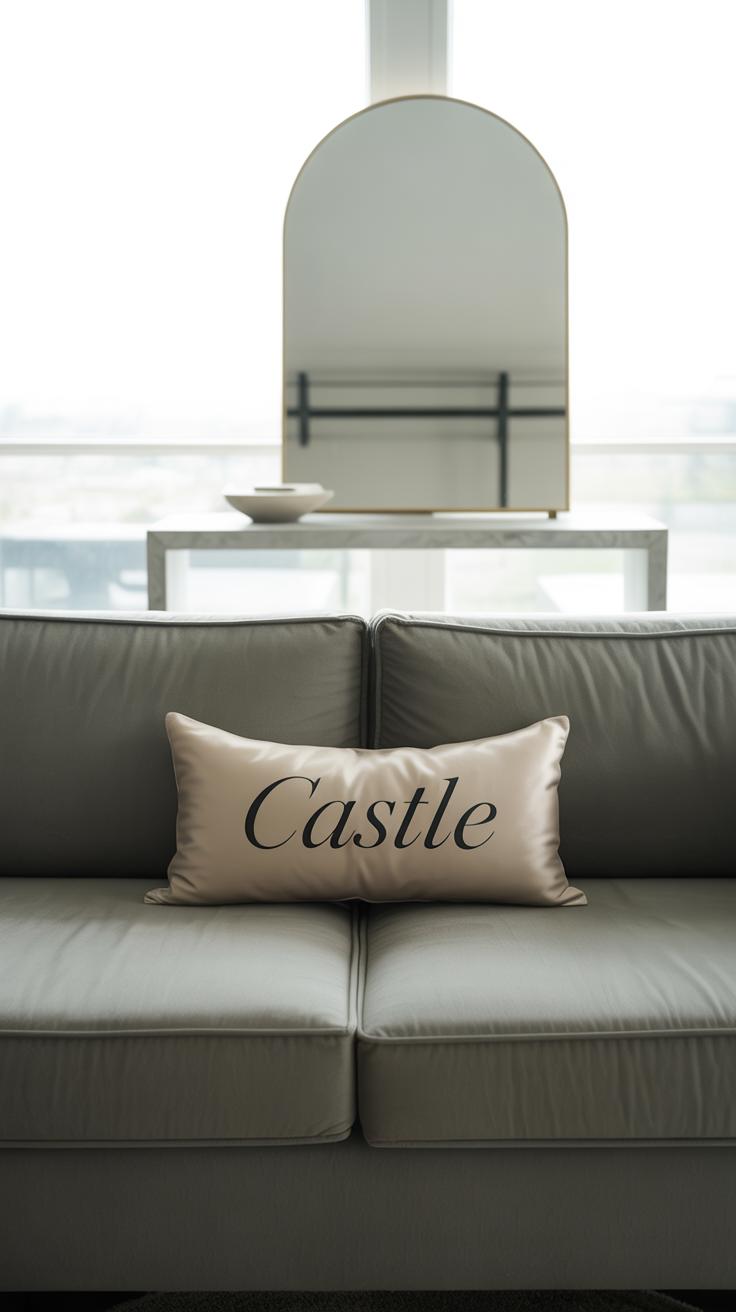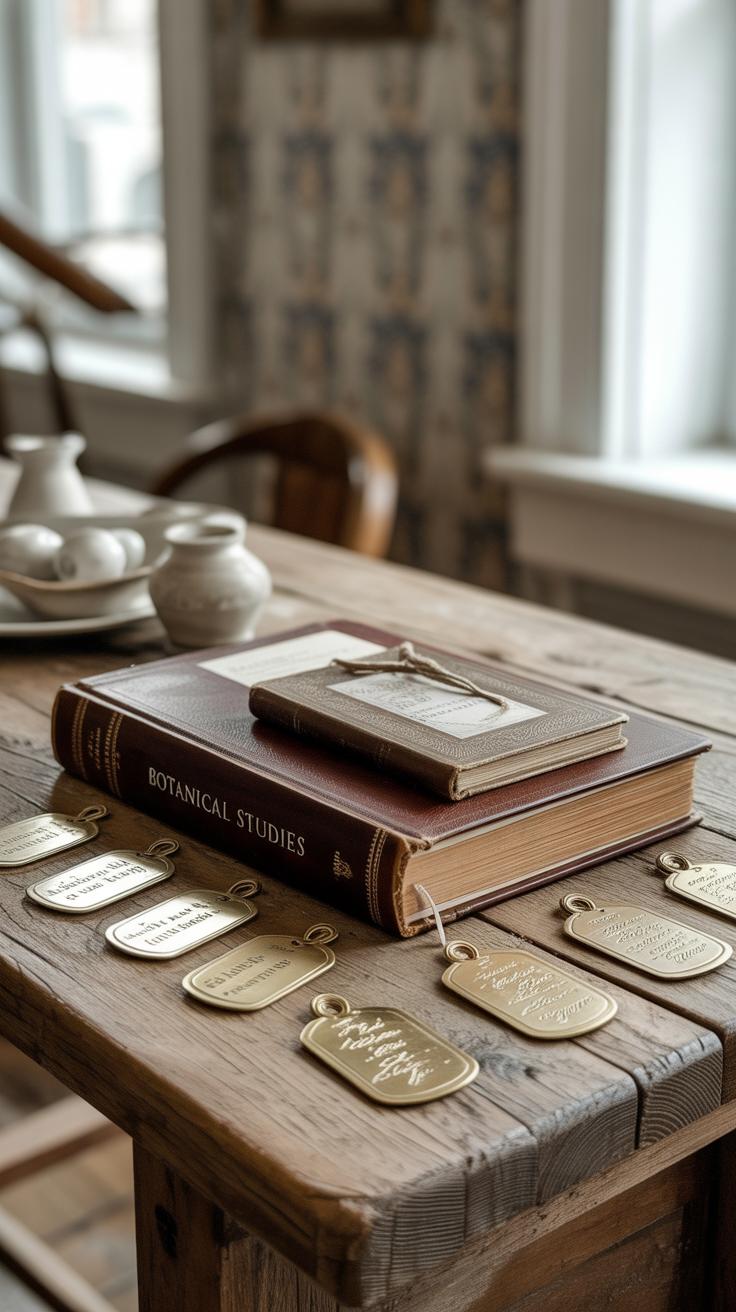Introduction
Discover how to bring the beauty and power of castles into your home. Castle aesthetic home decor ideas offer a chance for everyday royal living. This style mixes historic charm with modern comfort. You can transform your rooms into majestic spaces that still feel welcoming and livable.
We will explore easy ways to include castle features in your decor. Learn how to choose colors, furniture, fabrics, and accessories that echo castle grandeur. Find ideas for lighting, textures, and room layout. Let your home share the strength and style of a castle while supporting your everyday needs.
Understanding Castle Architecture and Its Influence on Decor
Castle architecture often strikes people as both imposing and graceful at once. The defining elements are strong, unyielding lines—think thick stone walls that seem almost unbreakable—and rounded arches that soften the rigidity just enough. These features don’t just serve a purpose in defense or structure; they inspire how we shape spaces today. In home decor, this can look like incorporating sturdy stone or stone-like materials, rounded doorways, or even iron hardware that mimics castle fittings. People are drawn to these ideas because they feel grounded, timeless—like the kind of solidity that tells a story.
When you imagine castle-inspired design, some basic features come to mind immediately:
- Towers with their narrow windows
- Battlements, those crenelated tops along walls
- Heavy wooden doors reinforced with metal
- Large fireplaces built from rough-hewn stone
These elements translate well into home decor—picture a room framed by archways or a statement wall finished with textured stone tiles. I’ve noticed that even subtle touches, like wrought iron chandeliers or decorative shields, pull the look together without feeling over the top.
Key Structural Features of Castles
Castles come with distinct, recognizable parts, many of which have now become stylistic cues. For instance, towers aren’t there only for verticality; they symbolize watchfulness. In your home, tall bookshelves or narrow windows can echo that sense of upward strength.
Battlements, those notched parapets on rooftops, suggest defense but also a rhythmic pattern, which can be replicated in molding or trim work in interior design. Moats might not be feasible indoors, but reflective surfaces or sunken seating areas can give a nod to moat-like boundaries.
Stone walls feel permanent, unmovable. Incorporating stone veneers or rough plaster walls provides a similar impression of endurance. Even rough textures, like exposed brick or concrete, help capture that rugged authenticity. These castle elements remind you of a space designed to last—something solid in a world that often feels fleeting.
How Castle Design Evokes Strength and Elegance
There is something about castle shapes and materials that seem to command respect. Thick stone walls don’t just protect; they communicate resilience. Arches and curves soften this strength, adding a touch of elegance that balances the fortress-like feel. This balance creates an atmosphere that feels both secure and refined.
Using these ideas in home decor might mean pairing rough stone with rich fabrics like velvet or silk, or placing bold, structural furniture alongside delicate accessories. The interplay makes the space welcoming rather than cold.
It’s interesting to consider that while castles were built for defense, their design also sends a message of prestige. That seemingly contradictory mix of protection and beauty invites you to think—how can my own space offer safety but still feel gracious? That’s what castle-inspired decor sets out to capture.
Choosing a CastleInspired Color Palette
When picking colors that feel like they belong in a castle, you want to think about tones that carry a sense of history and warmth. Deep reds, rich golds, dark blues, and cool greys are colors you’ll often find in historic castles—and they bring a certain weight and presence to a room. These hues can create an inviting but noble atmosphere, which is kind of what you want when you’re aiming for that castle aesthetic at home.
Take burgundy, navy, or forest green, for instance. These rich, bold colors work well on walls or large furniture pieces, like an upholstered armchair or a wooden cabinet. I remember painting a small feature wall in my own living room a deep navy—it transformed the space, made it feel almost like a private chamber with history behind it.
But you don’t want the room to feel too heavy or dark. That’s where neutrals come in. Soft greys, creamy whites, and beige tones can help balance the bolder colors and bring in the subtlety of stone or metal that you’d spot in a castle’s structure. Using these softer colors on trims, ceilings, or even large rugs can prevent the room from feeling claustrophobic, while still supporting that timeless elegance.
So, how do you start choosing your palette? Try layering one or two deep colors with several neutral tones to give your space depth and interest without overwhelming it. Think of those majestic stone walls softened by warm torchlight—that mix of rustic and refined—could that be the feeling you want to capture? It’s worth experimenting with paint samples or fabric swatches in your own light before committing. Your home’s castle vibe depends a lot on those small, thoughtful color choices.
Furniture that Brings Medieval and Castle Style Home
Types of Furniture Popular in Castle Decor
When you think of castle furniture, sturdy wooden pieces immediately come to mind. These aren’t your typical lightweight tables or flimsy chairs. Solid oak, walnut, or dark pine dominate, built to last through centuries—or at least give you that impression. Carving is a big part of the appeal: intricate patterns along chair backs, table edges, even chests. And yes, the iconic high-backed chairs are almost a must-have. They add an air of authority and presence to any room, which, honestly, is why I like having one by my desk.
But integrating these heavy looks with modern needs is a bit of a dance. You want your furniture to feel commanding, but not uncomfortable or impractical for daily living.
Materials and Shapes that Feel Like a Castle
Solid wood goes without saying—it’s the foundation for that authentic castle vibe. Pair this with wrought iron details, like table legs or chandelier supports, and you can recreate an almost fortress-like strength. Leather upholstery fits surprisingly well, adding texture and durability. It’s tough, yes, but it also softens the severity of wood and iron. Shapes tend to be bold and substantial: think thick legs, heavy armrests, and squared-off edges. Though sometimes you might find rounded or arch-shaped elements mimicking gothic windows or doorways, which adds an unexpected softness.
Mixing Old Design with Modern Comfort
Here’s where things get interesting. Picture an antique-style medieval chair—refinished or restored—and then add modern cushions or removable covers for comfort. It keeps the look without the ‘ouch’ factor when you sit down after a long day. Or imagine a solid wood dining table with sleek, contemporary chairs upholstered in luxurious but easy-care fabrics. You combine the best of both worlds, really. Antique crates can double as stylish side tables, topped with soft throws or modern lamps. It’s not about full accuracy; rather, making the style work with your life.
Fabrics and Textures to Enhance the Castle Atmosphere
When aiming for a castle-inspired space, fabric choices are crucial. Heavy fabrics like velvet and brocade don’t just look rich—they change the whole room’s feel. I’ve noticed that adding thick velvet drapes can almost absorb sound, making a room feel quieter, cozier, almost like you’re stepping into a different era.
For upholstery and cushions, embroidered or textured materials bring subtle complexity. They invite touch, which matters if you want a lived-in luxe vibe rather than a stiff showroom effect. Mixing different textures—say, a brocaded cushion beside a smooth velvet one—adds layers that stop the space from feeling flat.
Rugs and wall hangings are another way to add depth to your rooms. A thick rug underfoot gives warmth and weight, which counters colder surfaces like stone or wood floors. Hanging banners or tapestries, especially those with historic patterns or motifs, softens bare walls and recalls ancient castle interiors. It’s almost like these pieces hold stories, even if they’re new.
Have you ever wondered why castles never felt cold or stark despite their massive stone walls? Texture and fabrics play a part. Experiment by layering fabrics in different parts of the room—heavy drapes, cushions, floor coverings. It’s worth paying attention to how these layers make you feel because that’s where the atmosphere—this warm, regal charm—really starts to happen.
Lighting Ideas for a Castle Feel
Using Warm and Soft Lighting to Create Ambiance
Light plays a surprisingly big role in how your space feels, perhaps more than you realize. When aiming for a castle vibe, think beyond just brightness. Warm and soft lighting helps bring out that cozy, somewhat grand feeling of old stone halls and quiet chambers. The kind of glow that invites you to linger and maybe even imagine stories passed down through generations—well, that’s what you want.
Use bulbs with a warmer color temperature, like those around 2700K or lower. They emit a gentle yellow-orange hue that softens edges and makes rooms feel inviting rather than stark. I find this especially nice in living spaces where you want comfort and a hint of luxury without going over the top.
Layer your lights too. Combine table lamps, wall sconces, and ceiling fixtures to avoid harsh shadows. When light scatters softly from multiple directions, it contributes to that rich, timeless feel that’s so characteristic of castles.
Decorative Light Fixtures Inspired by Castles
Light fixtures aren’t just about function—they shape the mood in subtle ways. When picking pieces for a castle-inspired room, styles that look hand-forged or something from a medieval forge really fit.
Wrought iron chandeliers make a strong statement. Their rough-hewn iron arms and candle-like bulbs evoke old castle halls. You might find one with twist details or floral scrolls, which add just enough decoration without feeling too delicate. If a large chandelier feels too much, try iron lanterns or pendant lights with a similar look—they often cast beautiful shadows on walls.
Candle sconces are another option. Even if you opt for electric candles, these fixtures provide that flickering castle authenticity. Mounted along corridors or flanking a fireplace, they create rhythm and warmth. You could even mix real candles carefully into your decor to deepen that old-world charm, though it requires some caution.
Overall, look for fixtures that show some craftsmanship, with a bit of ruggedness. Perfectly polished isn’t quite right. The slightly imperfect, hand-forged appearance is what brings the castle spirit alive.
Incorporating Castle Decor Accessories
You can bring castle vibes alive with shields, swords, heraldic designs, and stone statues. But there’s a fine line between charming and overwhelming. For example, a single antique shield or a delicately wrought sword displayed on a wall can add character without shouting “theme park.” A cluster of multiple swords might feel cluttered—or like you’re in a museum gift shop rather than a cozy home.
Some people like to mix in heraldic symbols in subtle ways, such as on throw pillows or framed prints. These touches hint at history without demanding center stage. Stone statues—like gargoyles or knight busts—could live near doorways or on mantels, not scattered around the floor trying to fill every gap. The idea is to introduce character pieces that feel natural, as if they’ve belonged there for centuries, not just arrived yesterday.
Adding Symbolic and Historical Pieces
Pieces that actually reflect castle history do more than decorate—they tell stories. Look for items that carry meaning, such as replica scrolls, aged maps of old castles, or portraits modeled after medieval nobility. These pieces bring personality, making your space feel lived-in rather than staged. I once found an old iron key that looked weathered and mysterious, and placing it on a wooden tray gave my entryway that little spark of authenticity without trying too hard.
Sometimes, even small historical details invite curiosity. You might wonder about a coat of arms or wonder what a certain emblem represents. Those questions enrich your space. It’s about more than appearance; it’s about a connection to a past that feels real, or at least believable enough to spark the imagination.
Balancing Theme and Function in Decor
Castle-inspired decor shouldn’t stop you from using your rooms comfortably. It’s easy to get carried away with every nook stuffed with thematic objects, making the space feel cramped or less practical. Keep functional surfaces clear. For instance, a stone statue is great on a wide mantel, but not on a crowded side table you often use.
Think about your daily routine. Will a sword hanging above the couch distract? Does a heavy-looking object limit seating space? Your castle’s charm must coexist with everyday needs; otherwise, the appeal may quickly fade. I’ve seen rooms that look more like a display case than places to live, and that just doesn’t work long term.
The balance comes with trial, error, and sometimes leaving some accessories out. Tasteful castle decor adds richness, sure—but not if it hinders how you move or feel in your home. How much is enough? Maybe a few well-placed pieces rather than piles of relics—that’s something you’ll discover for yourself as you go.
Creating Castle Inspired Rooms Room by Room
Castle Bedroom Ideas for Royal Comfort
Your bedroom can feel like a true royal chamber with a few thoughtful touches. Start with bedding that invites comfort—think rich fabrics like velvet or heavy linens in deep colors such as burgundy, navy, or forest green. Layering with textured throws and pillows helps create that cozy, stately vibe.
Furniture should echo old-world charm. Consider a canopy bed or one with carved wooden details. Nursing the balance between ornate and functional is tricky but vital—too much can feel overwhelming. A classic wooden dresser or an antique-style bench at the foot of your bed can tie it together effectively.
Lighting makes a big difference too. Wall sconces or lamps with wrought iron bases—maybe candle-inspired bulbs—will soften the atmosphere without feeling harsh. If you can, opt for dimmable lights that help shift the mood from day to evening. It’s about building a restful retreat that hints at grandeur, without feeling stiff or uninviting.
Living and Dining Rooms with Castle Grandeur
The living and dining areas should feel elegant yet practical enough for daily life. Heavy wooden furniture—tables, chairs, and cabinets—forms a solid castle-like foundation. You can mix velvet-upholstered chairs with sturdy oak tables for a sense of both luxury and durability.
Ornate mirrors and tapestries can add drama to walls, but don’t overdo it. I’ve found that focusing on one or two statement pieces works better than cluttering every inch. Simple window treatments in rich colors can frame your space without distracting from the main features.
For dining, a large wooden table is a classic choice. Adding candle chandeliers or medieval-style iron fixtures overhead can create a warm ambiance. Practicality matters—making sure the layout allows for easy movement is key, especially if you entertain often.
In the living area, settle for a blend of plush sofas with carved wood accents. A stone fireplace, if possible, instantly brings the castle air without fuss. Otherwise, a mantel with candle holders or medieval-inspired décor helps evoke that feeling subtly.
Mixing Modern and Castle Aesthetic for Everyday Living
Bringing castle style into a modern home can feel tricky. You want the grandeur without losing the ease and comfort of today’s living. It’s about picking elements that nod to history but don’t weigh the space down.
Start by focusing on key castle features like stone textures, wrought iron details, or deep wood finishes—but use them sparingly. For instance:
- Pair a sleek sofa with a carved wooden coffee table.
- Add iron candle sconces on plain, painted walls instead of full tapestries.
- Choose statement pieces like a grand chandelier but keep the rest minimal.
This way, you get the feeling of castle charm without clutter or fuss. The mix can be playful. Don’t be afraid to let clean modern lines sit beside more ornate details. Your space should feel lived in, not staged.
Keeping Functionality and Comfort First
Castle decor can feel heavy or formal, but it doesn’t have to mean sacrificing comfort. Think about how you live daily and choose pieces that fit those patterns. Maybe a high-backed chair looks regal but isn’t comfy for long reading sessions—swap it for a soft armchair with subtle woodworking.
Look for castle-inspired materials that wear well or are easy to maintain. Stone-look tiles in the kitchen can evoke castle walls but clean far better than rough stone. Even a sturdy wooden dining table with simple carvings feels grand without the fragility of antiques.
Ask yourself: Does this serve my lifestyle? Sometimes that means letting go of a perfect period piece in favor of a more practical choice that still has character.
Combining Castle Style with Minimalism
Minimalism and castle style might seem opposites, but combining them can create an elegant balance. The trick is focusing on quality over quantity and allowing breathing room.
Try keeping decorations to a minimum—select a few strong, castle-inspired statement items rather than filling every surface. For example, a single large tapestry or a bold iron chandelier can define a room’s mood without overcrowding.
Use simple shapes and lines in furniture but in rich materials like leather, velvet, or aged wood to hint at tradition. Keep walls neutral to make the castle elements stand out more and avoid visual chaos.
This approach helps maintain that royal feeling but keeps your home calm and comfortable. It might take some trial and error to find your mix, but isn’t that part of the fun?
Tips for Sourcing Castle Style Home Decor
Finding castle-inspired pieces can feel a bit like a treasure hunt. Start with antique shops and flea markets. These places often hold unexpected gems—old leather-bound chairs, wrought-iron candleholders, or heavy drapery fabrics. I once found a medieval-style chandelier at a small vintage store that added the perfect touch to my living room, but be patient; it might take time to find what fits your vision.
Online marketplaces are also helpful. Websites like Etsy or eBay offer new and vintage items crafted or collected by sellers worldwide. You can filter by style or age and even reach out to sellers with questions. Just be cautious with shipping costs or authenticity claims.
Big home decor retailers sometimes carry castle-themed collections or medieval-inspired accents, especially around holidays. Watching for sales can help you grab ornate mirrors or velvet cushions without breaking the bank.
Finding Quality Pieces Affordably
Keep an eye on secondhand stores and estate sales. Sometimes, you stumble onto pieces that look quite costly but come at thrift shop prices. If you’re into hunting, frequent visits can pay off—patience truly matters here.
Consider subscription alerts or apps for price drops on websites selling vintage or reproduction castle decor. That way, you don’t miss out on deals. Don’t hesitate to negotiate prices, especially for bulky items like armoires or large tapestries. Sellers might be flexible, more than you think.
DIY Projects to Add a Castle Touch
Making castle-inspired décor yourself can bring personal charm. Simple projects like distressing wooden picture frames to mimic old wood, or sewing velvet pillow covers with tassels, can add instant character.
Try crafting wrought-iron look-alike candle holders using painted wire or making medieval-style wall banners from fabric scraps and stencils. Even repainting ordinary lamps with dark metallic hues can evoke a more medieval feel. These small touches add up and feel more unique—plus, you get the satisfaction of having made it yourself.
Conclusions
The castle aesthetic offers unique ways to enrich your home. It blends past and present, style and function. By using key elements like rich colors, sturdy furniture, and elegant details, you create spaces that feel royal yet comfortable.
Try these ideas step by step. Mix castle features with your personal taste. Your home can embody the spirit of a castle. Live in a space that reflects history, beauty, and your own sense of grandeur. Adventure awaits in castle living every day.

